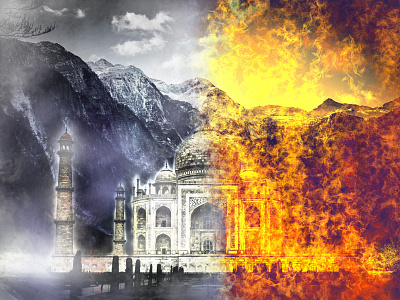Taj
The Taj Mahal is an enormous mausoleum complex commissioned in 1632 by the Mughal emperor Shah Jahan to house the remains of his beloved wife. Shah Jahan was a member of the Mughal dynasty that ruled most of northern India from the early 16th to the mid-18th-century. At his side was Arjumand Banu Begum, better known as Mumtaz Mahal, whom he married in 1612 and cherished as the favorite of his three queens.
In 1631, Mumtaz Mahal died after giving birth to the couple’s 14th child. The grieving Shah Jahan, known for commissioning several impressive structures throughout his reign, ordered the building of a magnificent mausoleum across the Yamuna River from his royal palace at Agra. Two notable decorative features were repeated throughout the complex: pietra dura and Arabic calligraphy.
The Taj Mahal is indeed a wonder in many senses. The color of the Taj varies as per the time of the day and the condition of the sky. It gives out a pinkish hue during the early morning hours. During the evening the Taj looks milky white. At night time, under the moonlight, the Taj Mahal gives out a light blue hue. This is indeed truly fascinating.
